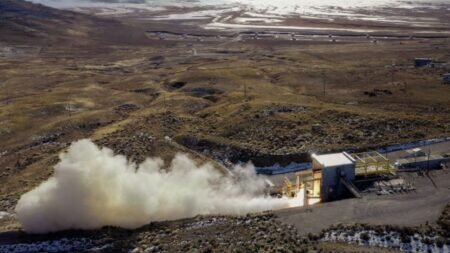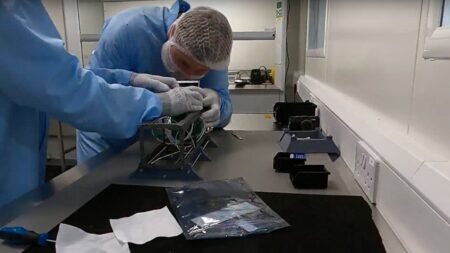The Manta Ray prototype, an unmanned underwater vehicle (UUV) developed by American multinational defense company, Northrop Grumman, underwent comprehensive testing in Feb. and March 2024 off the Southern California coast, the Defense Advanced Research Projects Agency (DARPA) said Wednesday.
These tests evaluated the vessel’s hydrodynamic performance at sea, encompassing submerged operations utilizing all propulsion and steering mechanisms, such as buoyancy, propellers, and control surfaces, it said.
Kyle Woerner, DARPA program manager for Manta Ray said: “Our successful, full-scale Manta Ray testing validates the vehicle’s readiness to advance toward real-world operations after being rapidly assembled in the field from modular subsections,”
“The combination of cross-country modular transportation, in-field assembly, and subsequent deployment demonstrates a first-of-kind capability for an extra-large UUV,” Woerner was quoted as saying in the official statement.
Northrop Grumman transported the prototype in separate sections from its construction site in Maryland to its testing site in California. The seamless shipping and assembly process showcased the potential for swift deployment globally, without congesting vital pier space at naval facilities.
According to the Woerner, shipping the vehicle directly to its intended area of operation “conserves energy that the vehicle would otherwise expend during transit.”
“Once deployed, the vehicle uses efficient, buoyancy-driven gliding to move through the water. The craft is designed with several payload bays of multiple sizes and types to enable a wide variety of naval mission sets,” he added.
The Manta Ray program aims to showcase essential technologies for UUVs, characterized by extended duration, extensive range, and payload capabilities. If achieved, these advanced UUVs would provide combatant commanders with enhanced capacity without interrupting ongoing operations, as they can operate autonomously without reliance on manned vessels or port facilities once deployed.









